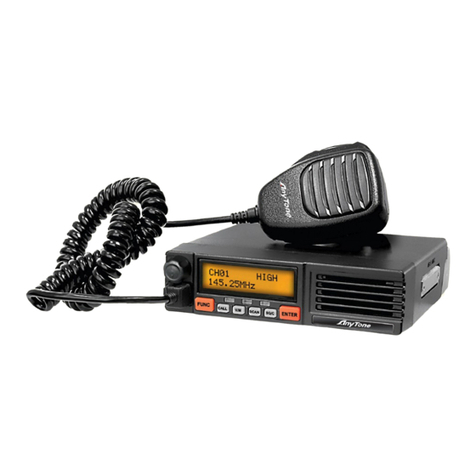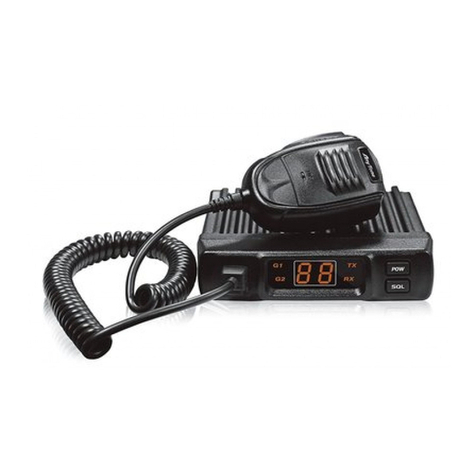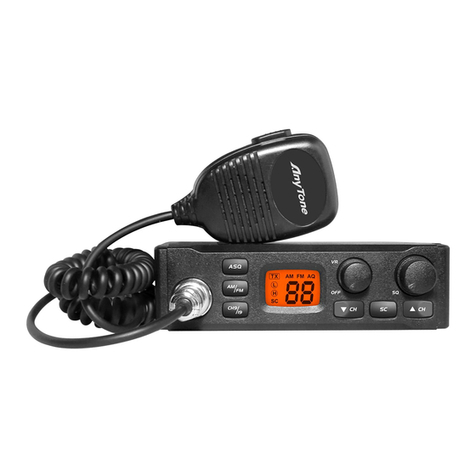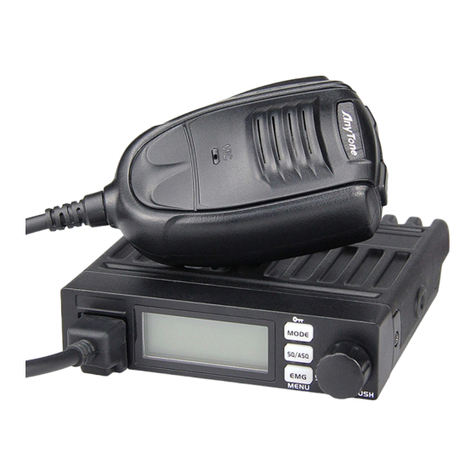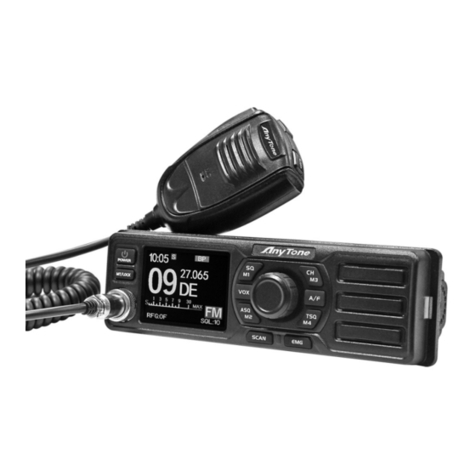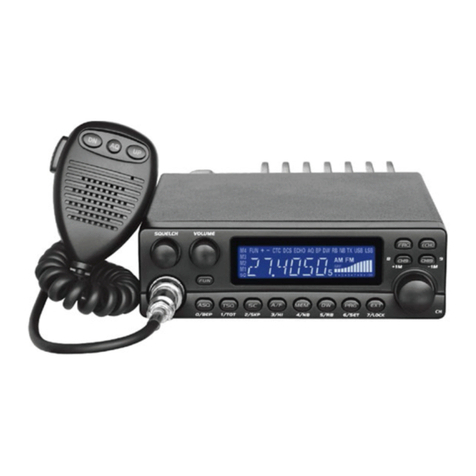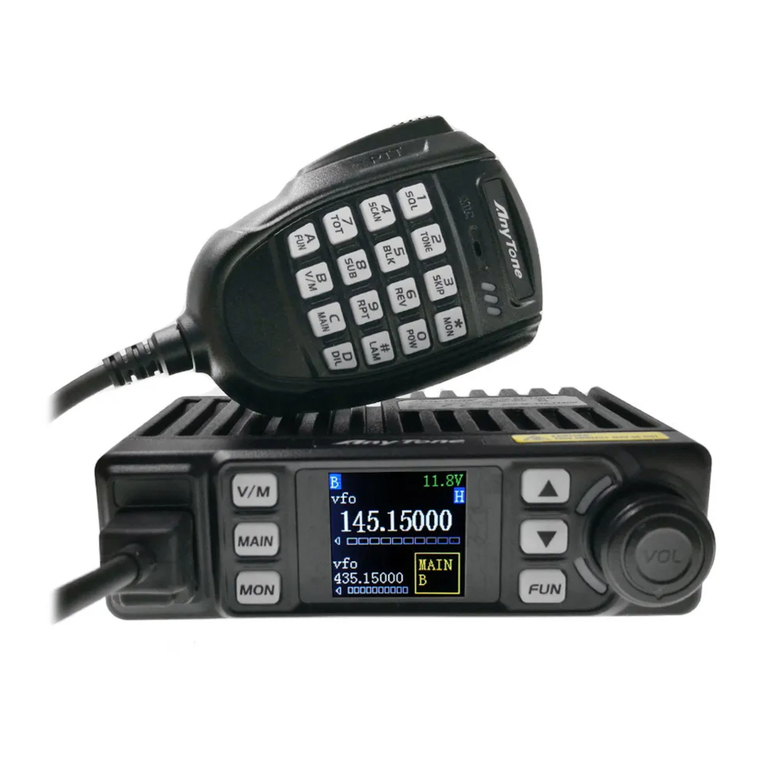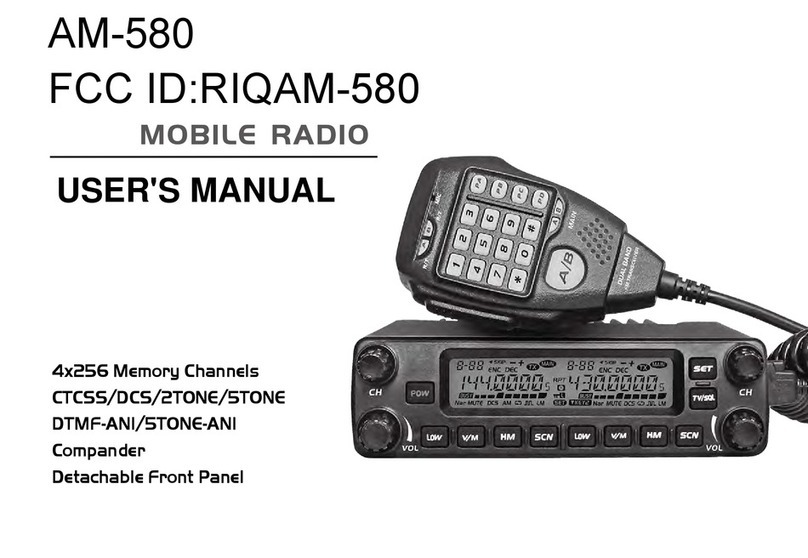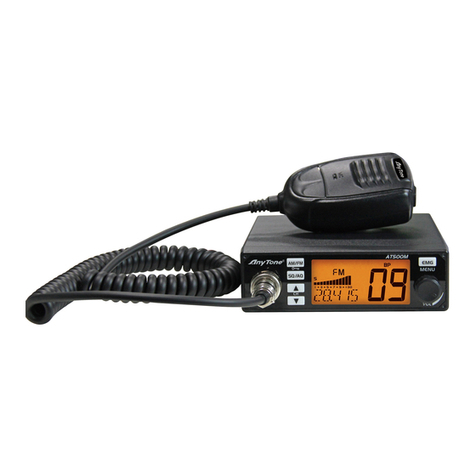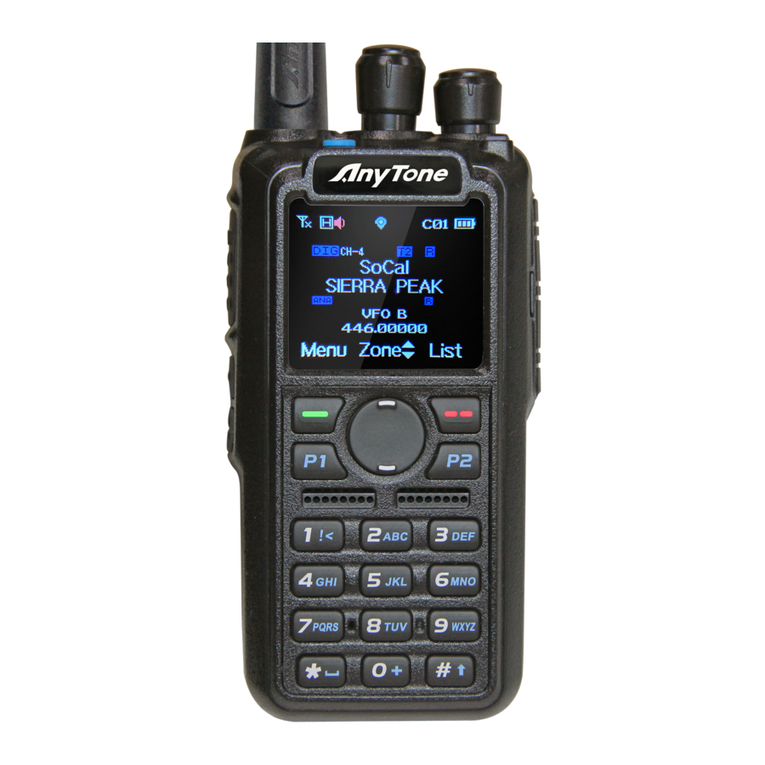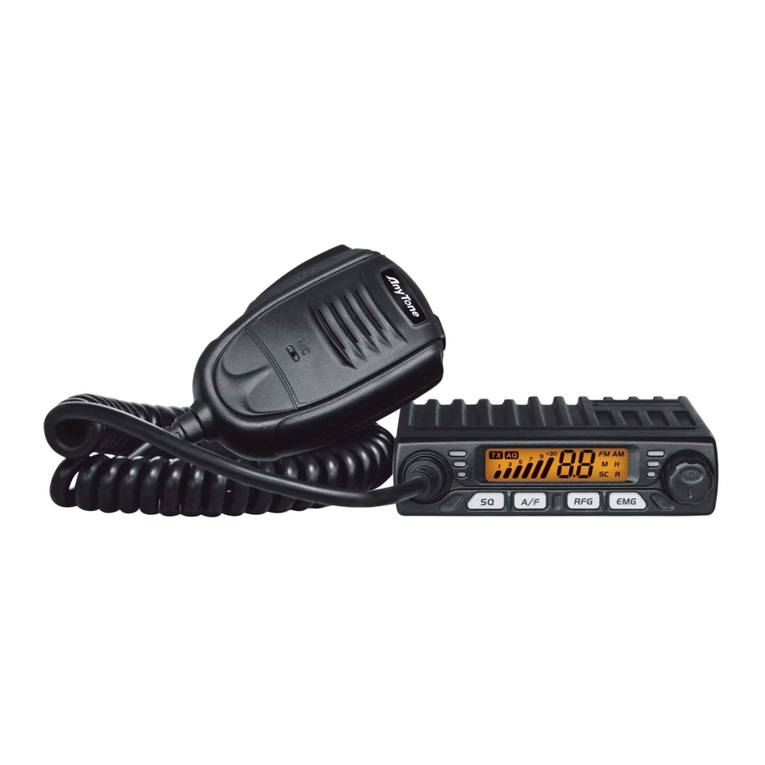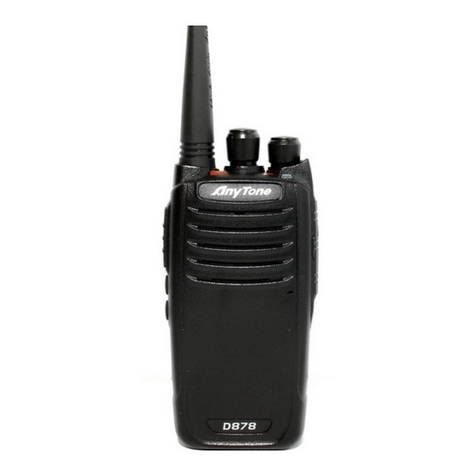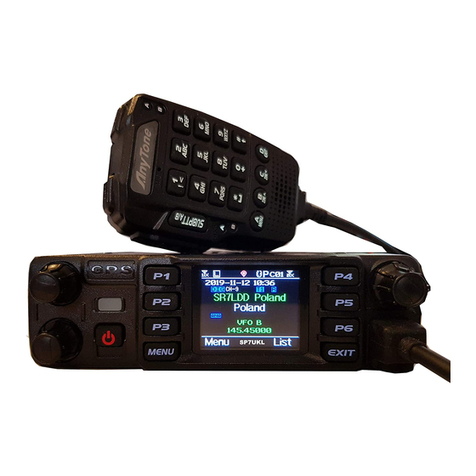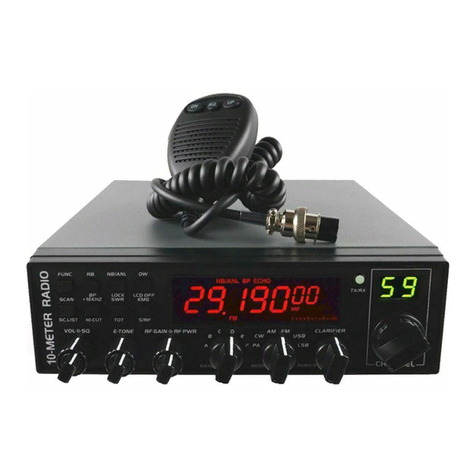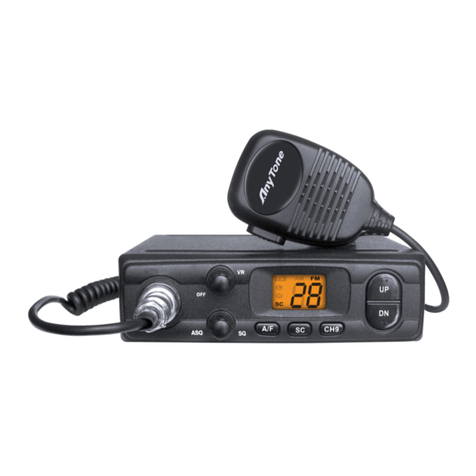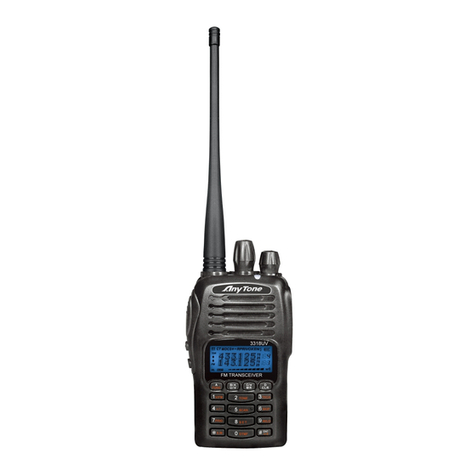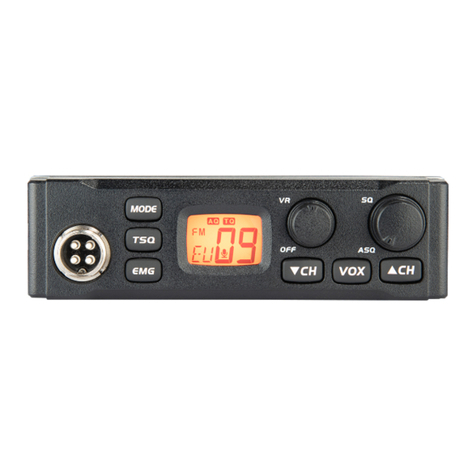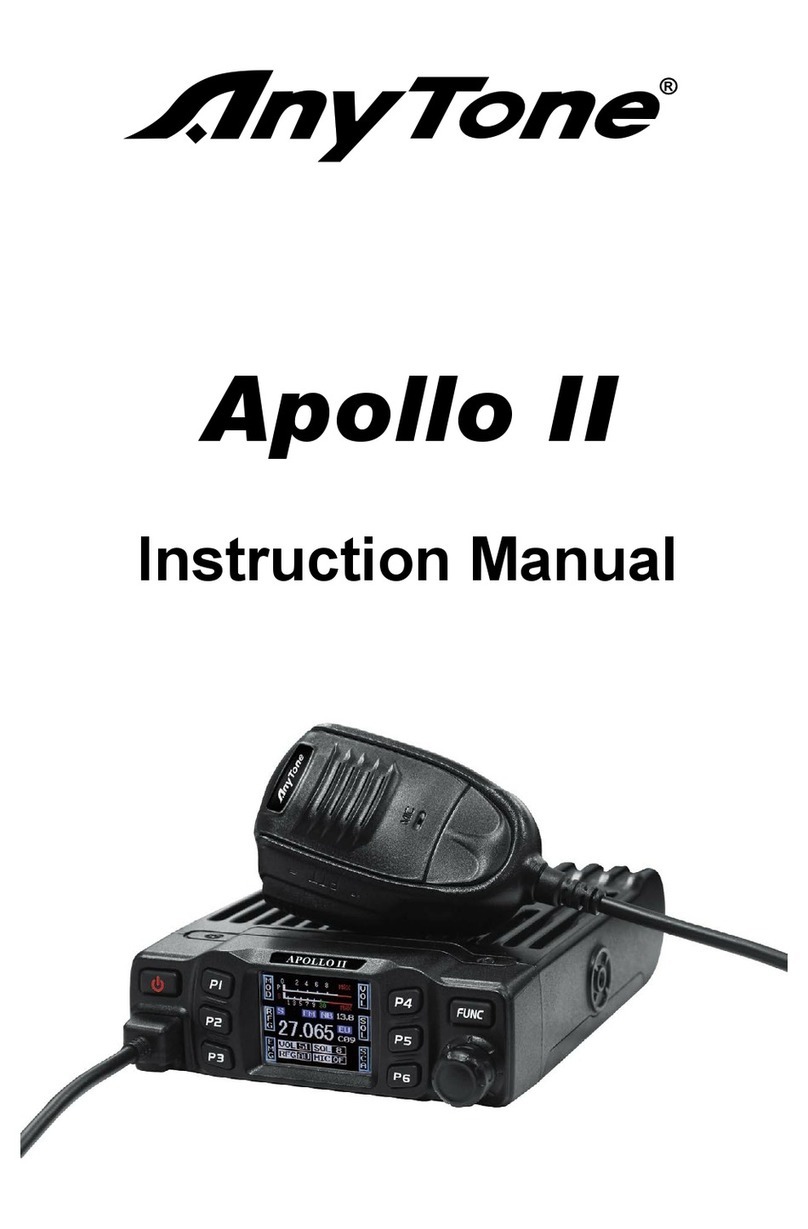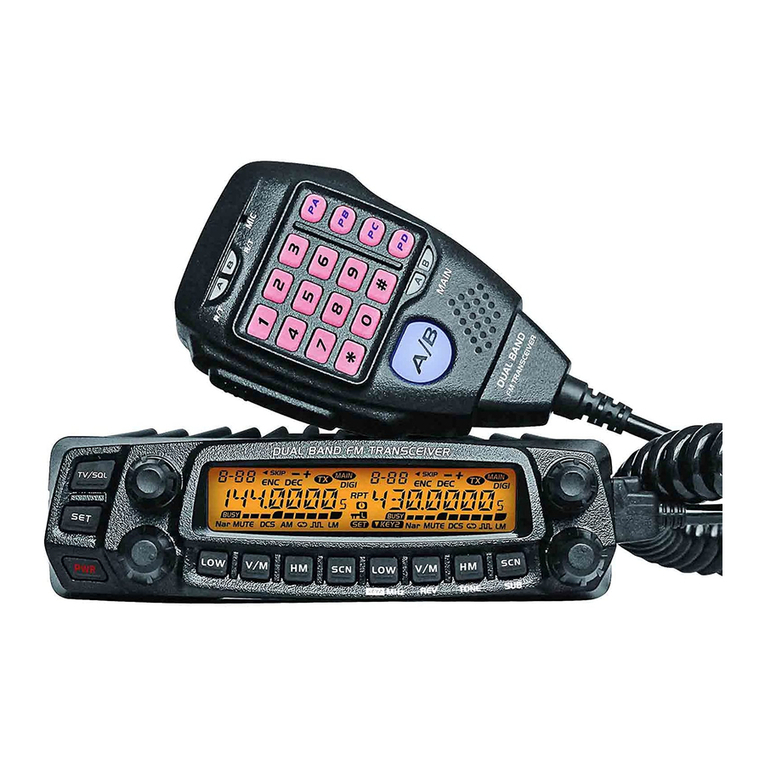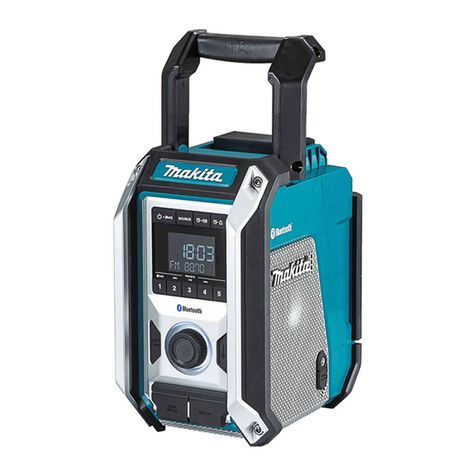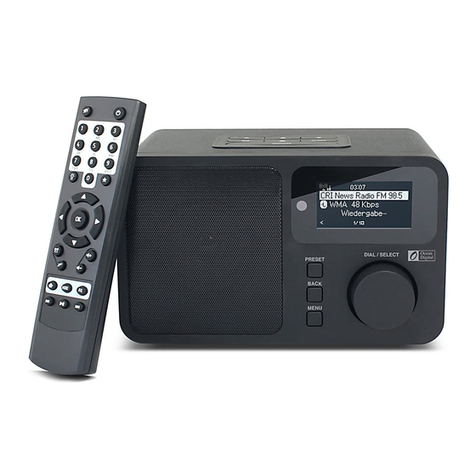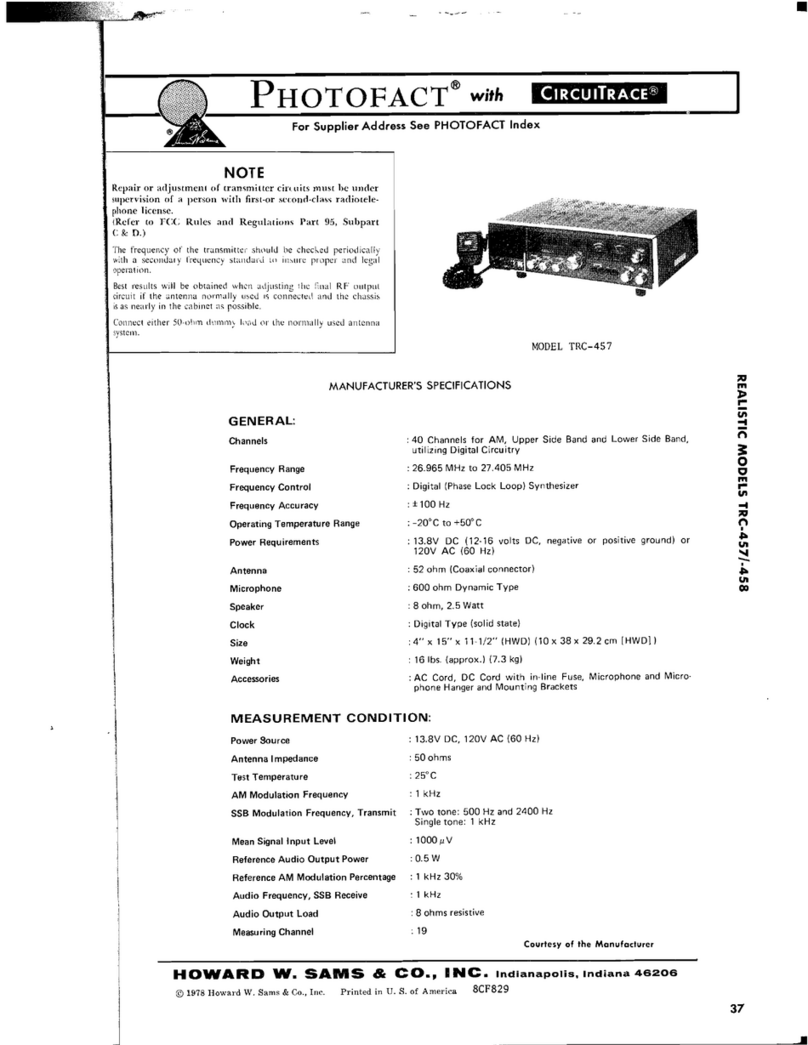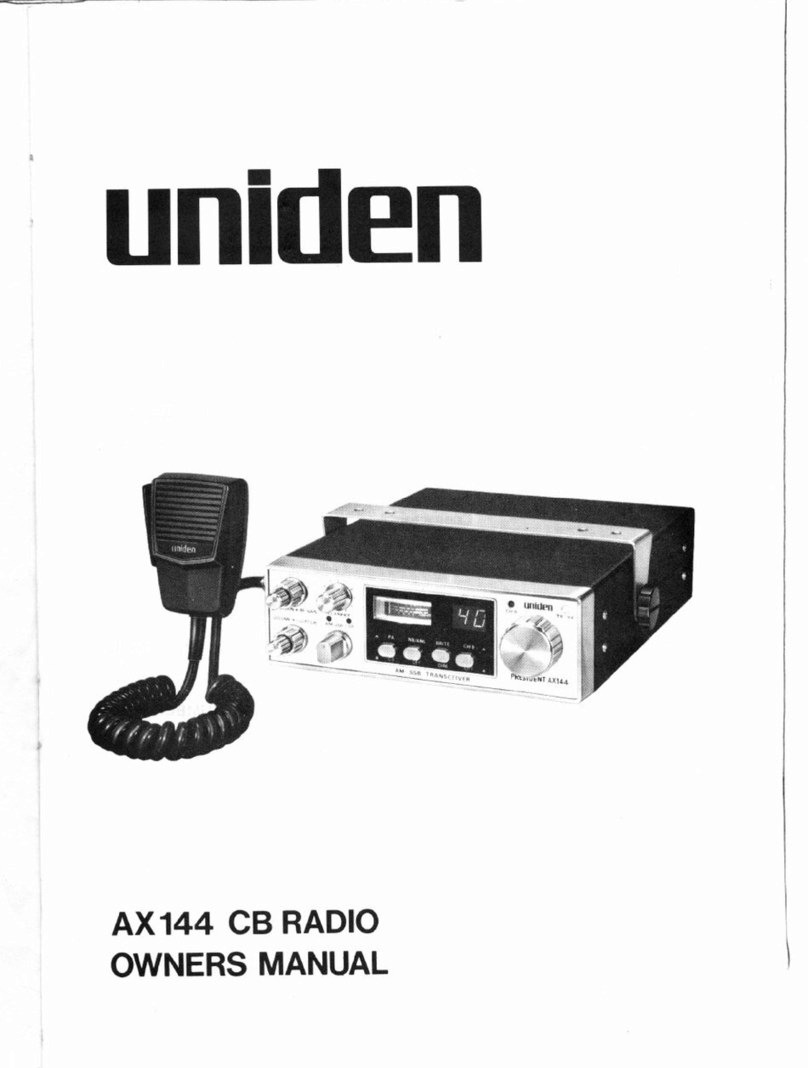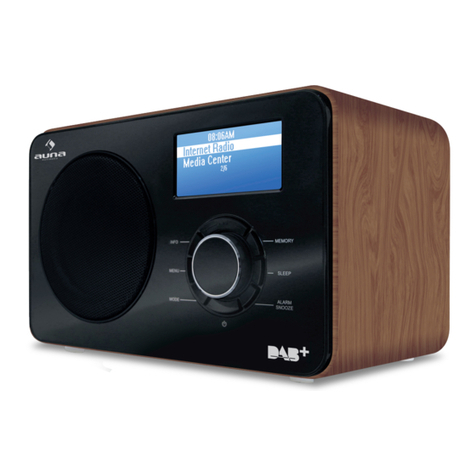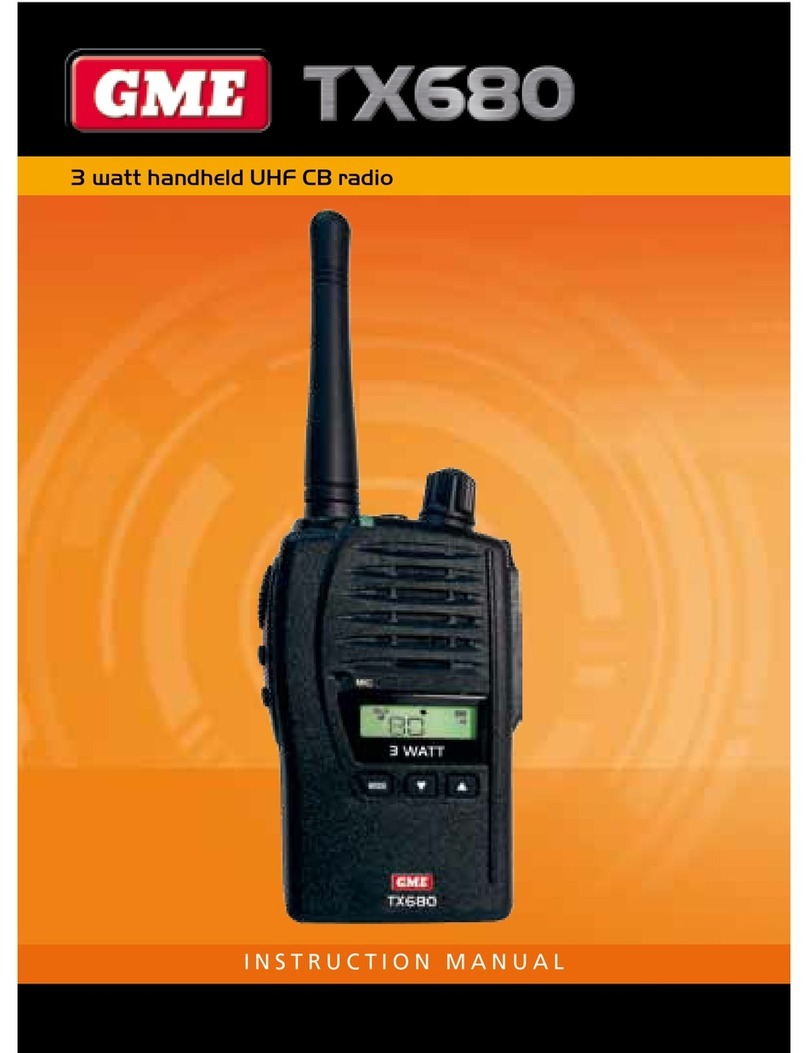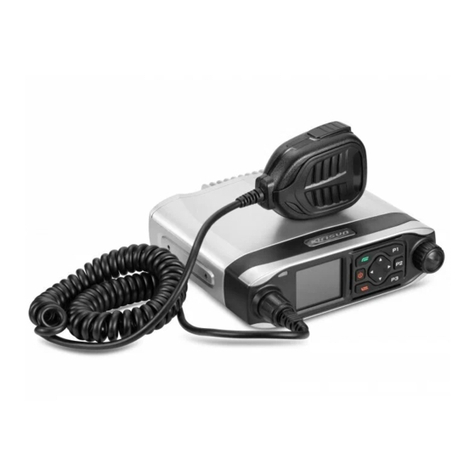
CONTENTS
1HZDQG,QQRYDWLYH)HDWXUHV..............................................1
Supplied Accessories/Optional Accessories.....................2
Supplied Accessories....................................................................... 2
Optional Accessories .......................................................................2
,QLWLDO,QVWDOODWLRQ ..................................................................3
Mobile Installation ............................................................................ 3
DC Power Cable Connection ...........................................................4
Power Supply Voltage Display .........................................................6
Antenna Connection ........................................................................ 6
Accessories Connections................................................................. 7
*HWWLQJ$FTXDLQWHG ..............................................................8
Front panel....................................................................................... 8
Rear panel ....................................................................................... 9
Display .............................................................................................9
Microphone ......................................................................................10
Working Mode(Amateur Transceiver or Professional
Transceiver)
........................................................................11
Basic Operations .................................................................12
Switching the Power On/Off ............................................................ 12
$GMXVWLQJWKH9ROXPH ......................................................................12
Switch between VFO and Channel mode .......................................12
$GMXVWLQJ)UHTXHQF\&KDQQHOThrough Selector Knob.................... 12
Receiving .........................................................................................12
Transmitting ..................................................................................... 12
Transmitting Tone-Pulse .................................................................. 13
Transmitting Optional Signaling ...................................................... 13
Channel Edit .................................................................................... 13
Channel Delete ................................................................................ 13
Shortcut Operations.............................................................14
Squelch Off/Squelch Off Momentary................................................ 14
Squelch Level Setup ........................................................................14
Frequency/Channel Scan ................................................................ 14
Channel Scan .................................................................................. 14
CTCSS/DCS Encode and Decode Setup ........................................14
CTCSS Scan....................................................................................15
DCS Scan ........................................................................................ 15
Compander (Decrease the background noise and enhance audio
clarity ..................................................................................................15
Offset Direction and Offset Frequency Setup ..................................16
Keypad Lockout ............................................................................... 16
Current Voltage Enquiry................................................................... 16
Auto-Dialer Setup.............................................................................16
Transmitting Edited DTMF Tones in the Auto-dialer Memory........... 17
General Setting.....................................................................18
Frequency Channel Step Setup....................................................... 18
DTMF, DTMF ANI, 2Tone or 5Tone Signaling ..................................18
Sending 2-Tone Call.........................................................................19
Sending 5-Tone Call.........................................................................19
Sending DTMF call ..........................................................................19
Signaling Combination Setup...........................................................19
